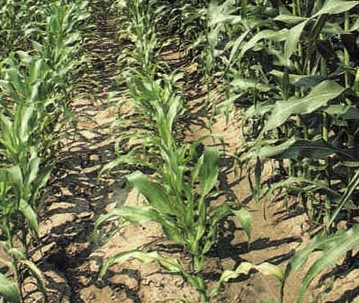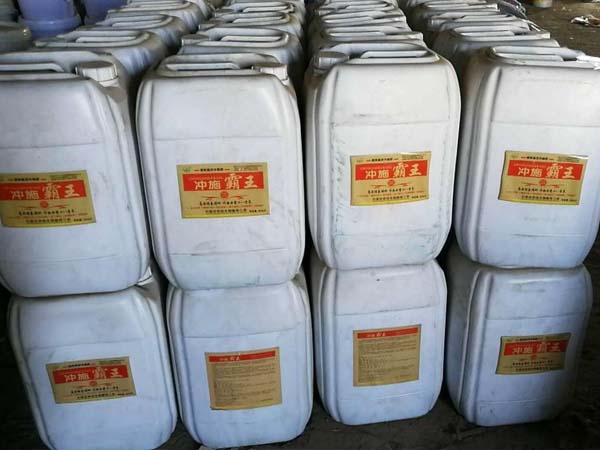Search Product
Search here for what you are looking for:
Search here for what you are looking for:

Importance of using fertilizers, why can not deficient
Microbial fertilizer is a popular trend nowadays, but traditional chemical fertilizers are still most economic for farmers. The growth of vegetables requires not only a large number of elements such as NPK, but also 10 kinds of medium and trace elements such as Ca, Fe and B. In the past, farmers often only paid attention to the application of a large macro elements of NPK, did not realize the importance of the application of trace elements, and did not form the habit of applying trace element fertilizers. The lack of medium and trace elements has become a prominent problem that restricts the quality and yield of vegetables.
The medium elements
The medium elements are nutrient elements
that needs to be inferior to N, phosphorus, potassium and higher than trace
elements in the process of crop growth, accounting for 0.1%-0.5% of the dry
weight of the crop body, and usually refers to three elements of Ca, Mg and S.
As important as microbial fertilizers on plants. 
Vegetables require a large amount of medium elements such as Ca and Mg, and the application rate is extremely small.
Studies have shown that the demand for Ca and Mg in most vegetable crops is very large. Some vegetables have a demand for Ca that exceeds or exceeds the demand for N, and is far more than one of the three major nutrients. For example, the demand for Ca in tomatoes is about 4.5 times that of phosphorus, and the demand for Mg is equivalent to the demand for phosphorus; the demand for Ca in eggplant is also more than four times that of phosphorus, and the demand for Mg is phosphorus. About 1.7 times; the demand for Ca fertilizer is about 5 times that of phosphate fertilizer, and the demand for Mg fertilizer is not much different from the demand for phosphorus.
When farmers grow vegetables, especially tomatoes, eggplants, cucumbers, etc., which require a large amount of Ca and Mg, they often have physiological diseases such as umbilical rot, rotten head, and yellow leaves, which are all related to medium elements.
Why is this happening? The application rate
of NPK is far more than that of Ca and Mg fertilizer. The vegetable farmers are
mainly based on NPK fertilizers, and they pay little attention to medium-weight
elements such as Ca and Mg. In most greenhouse vegetable cultivation areas, the
bottom fertilizer is mainly manure, and its nutrient content is relatively
comprehensive, but the content of N and phosphorus is high, followed by
potassium, Ca and Mg are less; in top dressing, it is N. Phosphorus and
potassium fertilizers are the mainstay, and Ca and Mg fertilizers are rarely
applied. In general, the application amount of NPK fertilizer is tens or even
hundreds of times of Ca fertilizer, resulting in imbalance of nutrients in the
soil. In particular, the large application of phosphate fertilizer causes the Ca
in the soil to be fixed, the activity is reduced, and it is difficult to be
absorbed and utilized by vegetables, and physiological diseases frequently
occur, which affects the increase of vegetable yield and quality. 
Then, for these three medium elements, how much is the application, and how is the ratio between the base application and the additional?
In many areas, especially those using groundwater irrigation, the content of Ca and Mg in water is higher, which can meet the demand of Ca and Mg in vegetables to some extent. However, Ca and Mg fertilizers supplemented by watering alone are not enough to meet the demand for Ca and vegetables such as tomatoes and cucumbers. Vegetable farmers should also pay attention to the rational application of base fertilizer. Ca fertilizer will antagonize with phosphate fertilizer. When the application of phosphorus fertilizer in soil is excessive, it will affect the absorption of Ca fertilizer by vegetable roots, which will lead to Ca deficiency in vegetables. The Mg in soil will antagonize with potassium fertilizer, especially when soil When the pH is higher than 8, Ca and Mg ions in the soil easily form carbonate precipitates, and become solids that are hard to be absorbed by vegetable roots.
Therefore, in the application of the base fertilizer, the vegetable farmers should rationally adjust the proportion of the five nutrients such as N, P, K, Ca and Mg according to the demand of different vegetables. Manure and other organic fertilizers have a full nutrient and high organic matter content, which helps to improve the soil and increase the activity of nutrients such as phosphorus and Ca that are easily fixed. Therefore, the base fertilizer should be mainly organic fertilizer such as manure. Then, according to the different nutritional needs of different vegetables, using different fertilizers.

The mobility of Ca fertilizer in the plant is the worst among the necessary elements. Therefore, in addition to the supplement of the base fertilizer, attention should be paid to the foliar supplementation, especially in the deep winter low season, the root activity is weak, and the foliar supplement should be supplemented with Ca and Mg in time. Fertilizer, improve the use of results.
In addition, groundwater contains a large amount of Ca and Mg, and reasonable watering during the growing season is also an important means to ensure the supply of Ca and Mg fertilizer. When the tomato is in the drought period, it is most likely to have a large amount of umbilical rot fruit, and after watering, the problem will be obviously reduced, even disappeared.
The medium element also includes S. The
symptoms of vegetables in the absence of S is similar to those of N deficiency,
which is characterized by yellowing and growth retardation. However, the
potassium fertilizer applied is mostly potassium sulfate (the compound
fertilizer is also used mostly), and the amount is large, so there is no need
to apply S-containing fertilizer separately, and the plants generally do not
have symptoms of S deficiency. 
The growth of vegetables requires several trace elements such as Fe, manganese, B, Zn, Cu, molybdenum and chlorine. However, because these trace elements are used in small amounts, they are easily overlooked. Tomato leaf disease, melons, beans and other flowers are not true, mostly due to the lack of trace elements. What are the symptoms of these trace elements when they are deficient?
When Fe enters the body of the plant, the mobility is limited. When the vegetable is deficient in Fe, the upper new leaf is easy to show green and yellow; when the vegetable lacks Zn, the growth is slow, the branches are shortened, the leaves are small and deformed, and the crowd is together. "lobular disease."
B deficiency in vegetables can cause flowering and unreality, affecting the flower bud differentiation of vegetables, and at the same time, it will stop the growth point of the root tips and stems of vegetables; when the vegetables are deficient in molybdenum, there will be chlorosis between the veins and necrotic spots. The edges are scorched and curled inward, which also affects the flowering and sitting pods of the vegetables.